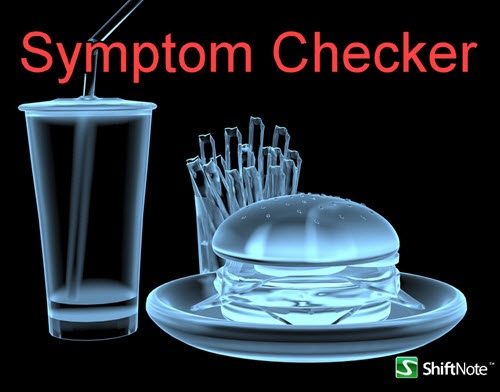
Here is the deal - often restaurants blame problems they are having on slow sales without looking at the reason for slow sales. Some restaurant owners even resolve themselves to believing that their restaurant just has an ongoing sales problem. But slow sales are always a symptom and never, ever, the problem. There is a huge difference when it comes to terminology. Labeling declining sales as a problem instead of looking at it as a symptom is an incredibly critical distinction to make, and here is why.
Problem vs Symptom
Viewing sales as the problem means that restaurants will hyperfocus on solving the problem. Their objective to solve the problem narrows in on only sales which ignores other issues that are contributing to it. Usually this tunnel vision produces only one plausible solution - more marketing to help increase sales.
Don’t get me wrong - marketing is absolutely an important part of generating sales! But trying to use marketing as a solution to fix declining sales is like providing electricity to a dead frog. Sure, it will jump, but the frog is still dead. You may seem random bursts of sales increases in marketing, but that is not an ongoing solution to your sales symptom.
Marketing changes when there is already an existing issue will not build guest loyalty, repeat business, and positive word of mouth marketing. More likely, the situation has more to do with what you are doing correctly or ignoring in your restaurant every day and how the overall experience is perceived by your guests including food quality, service, and atmosphere.
Look Objectively at Your Restaurant
If your sales are too low at your restaurant, it is not just happenstance! There is a reason behind the low sales and fixing that problem will be the solution to improving your sales. To figure this out, it is important to step back and take an objective look at your restaurant operations as well as the temperature of the local restaurant market. Consider the following:
- Food Quality: Is your food not only high quality, but consistently delicious? It is important not to rely on your own opinion here and instead find people who will tell you the truth. Ask your servers to test it out and give their honest opinion. Or leave survey cards at the table for guests to fill out. You can offer rewards for both of these to be completed.
- Service: Is your service staff friendly and responsive? Using a software that helps track sales and staff performance will give you a good view of how the staff is doing as whole since you can’t be there every second of the day to visually watch how they are doing.
- Guest Experience: Are you giving your customers what they want for the ultimate guest experience? Look at the quality provided, the choices customers make when ordering, prices on your menu, cleanliness of the restaurant, service provided, and the overall atmosphere.
- Competition: How does your restaurant's value proposition and experience proposition compare to what customers get from your local competitors? Send some of your servers to competitor restaurants in the area with the goal of analyzing their guest experience and overall quality. You could learn a lot!
- Word of Mouth: What are you customers saying about you? While you can’t be a fly on the wall in their homes, there are many places you can check (and monitor in the future) to look at how customers view your restaurant. Supply comment cards and read each one submitted. Check all of the review sites online, including Yelp and Urbanspoon. Explore restaurant blogs and forums as well as local news stations with articles discussing restaurants in the area. Sometimes people will comment about other restaurants in your market that they love or hate.
Whenever you take the time to look at every aspect of your restaurant and your local market, you will learn valuable information that will help you identify factors that you may be missing out on when you believe the only problem you have is sales. Without identifying the symptom of low sales, you are missing out on the big picture of your restaurant.
This is why throwing money at marketing when you have a low sales symptom is not the answer. This will make things worse if you spend time bringing in new customers to a restaurant that has problems. Instead, you must look at the restaurant from an intellectual perspective. Thinking objectively about all these factors that are keeping customers away will help you identify the real problem with your restaurant sales. When you look at the symptoms of low sales, it is the only way to come up with effective and lasting solutions.
ShiftNote is an Online Manager’s Logbook and Employee Scheduling Software available to make all those hairy management tasks easy to control in one simple interface. Start your research and see how technology can help your management by exploring ShiftNote!



